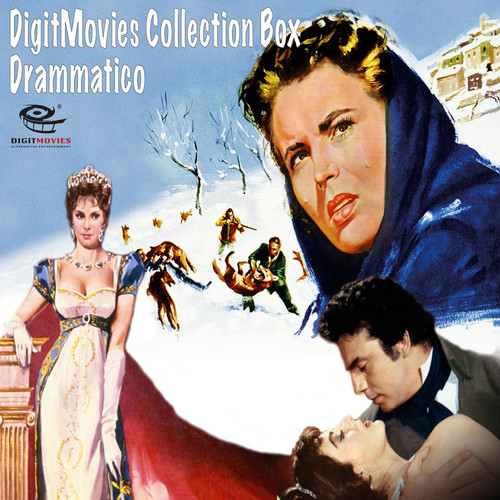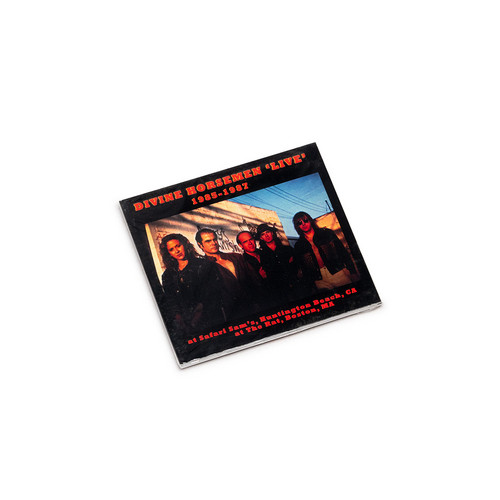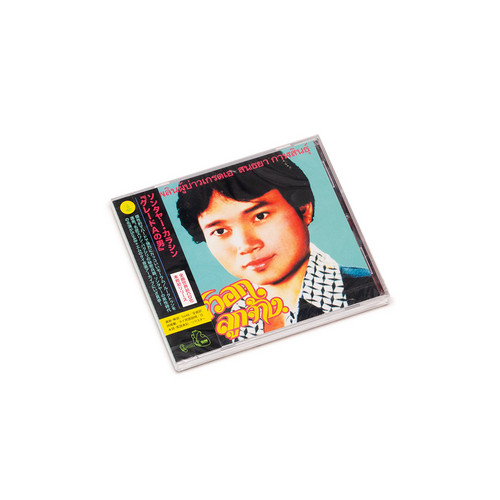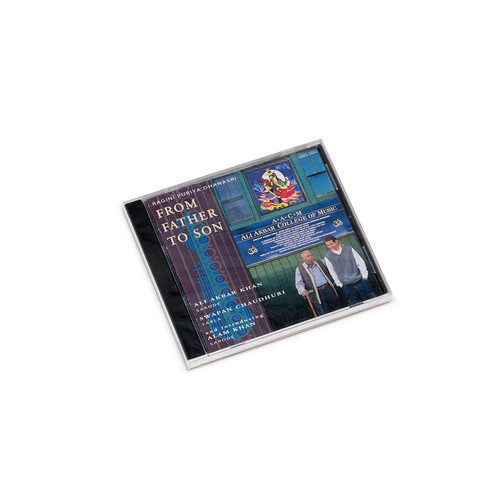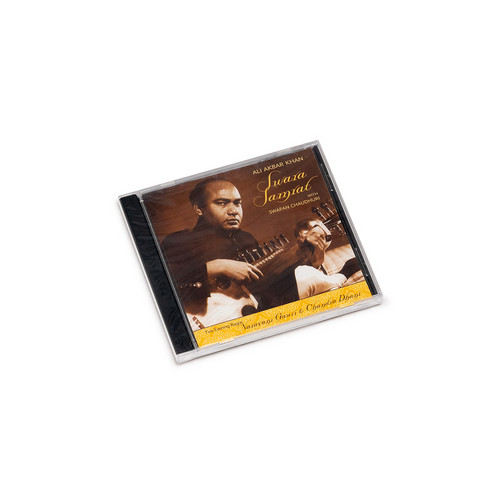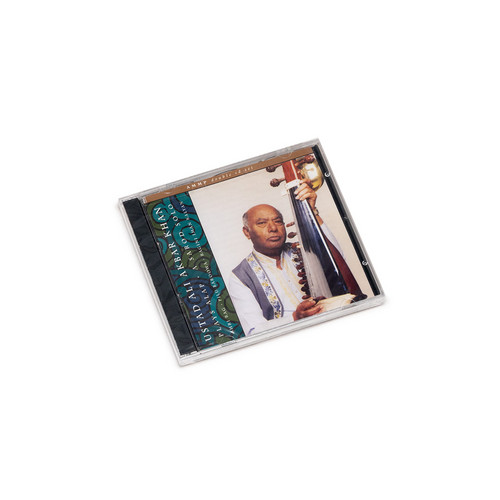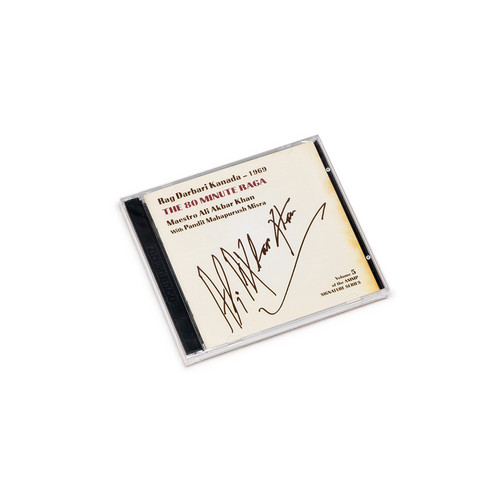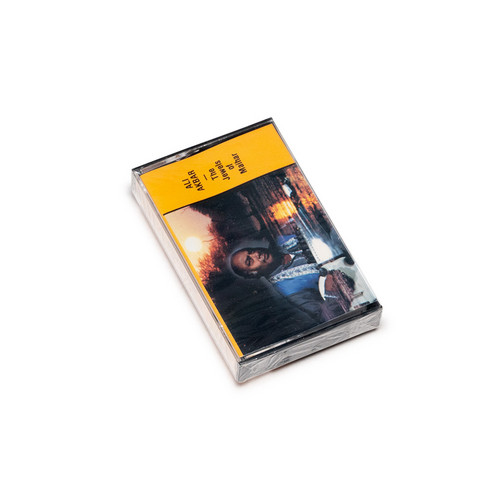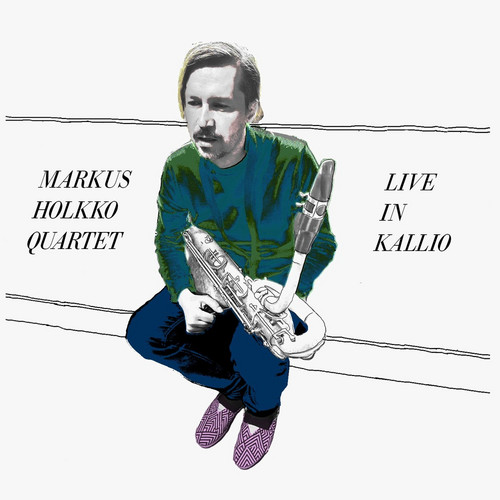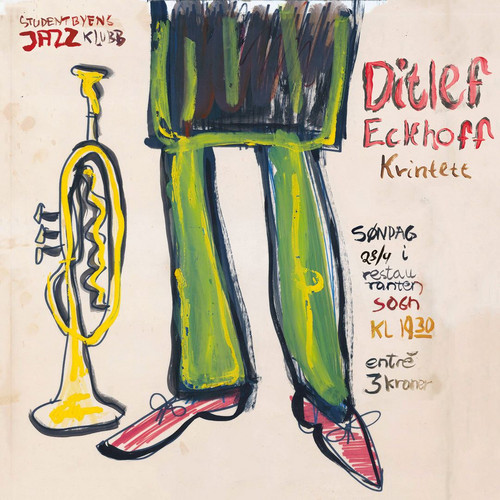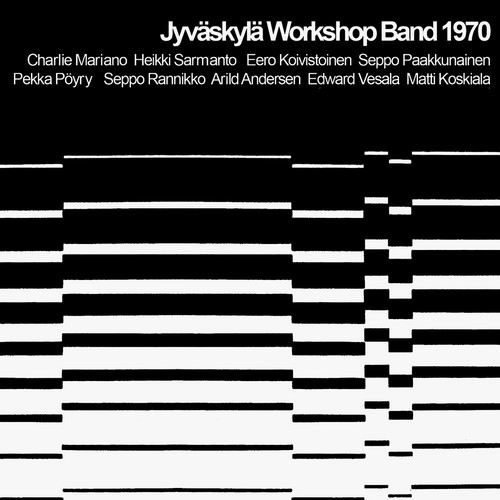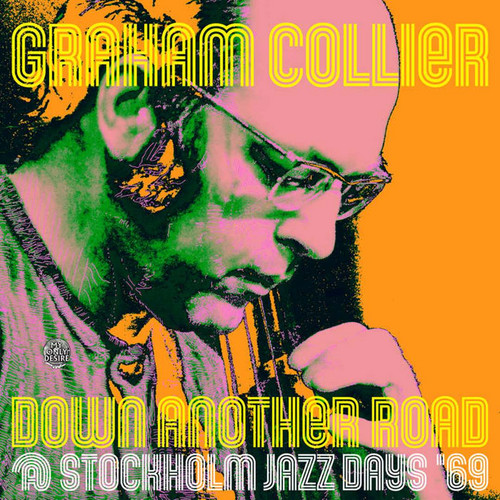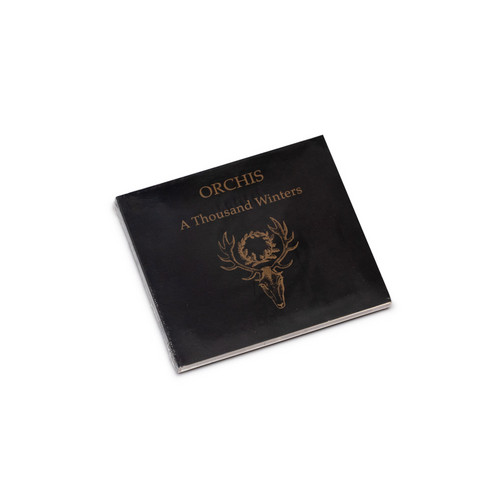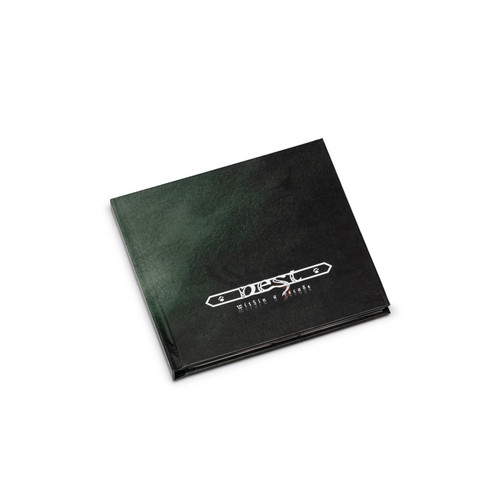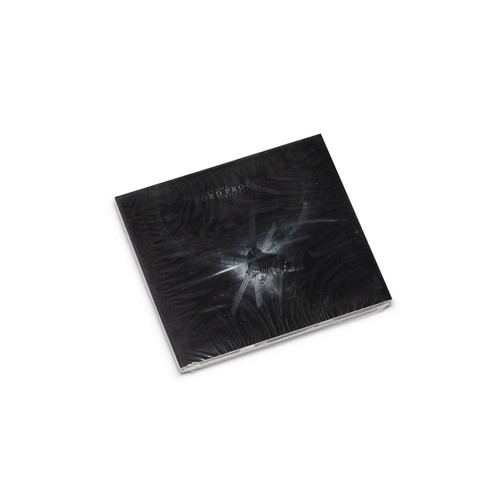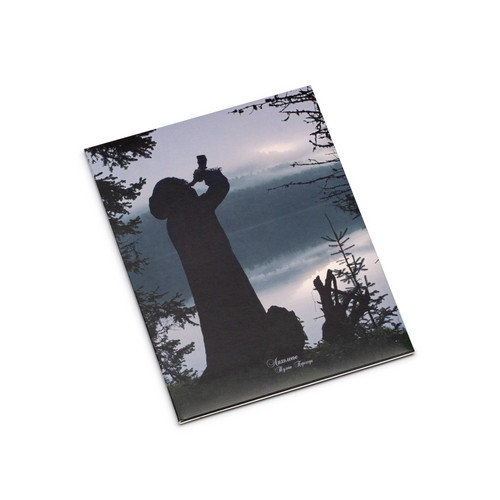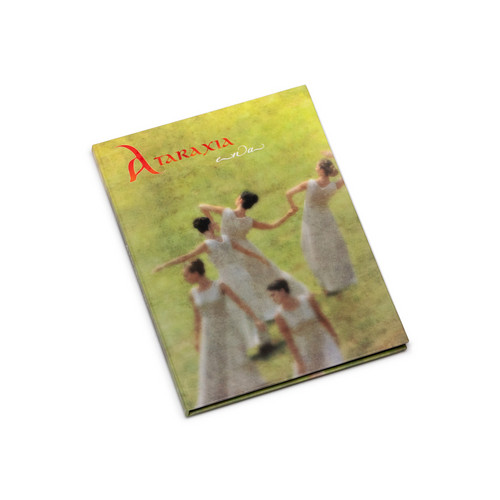Reissues
Digitmovies Collection Box - Drammatico
Angelo F. Lavagnino – Venere Imperiale
Digitmovies is proud to present on a double CD set (which opens the brand new deluxe digipack series) the complete OST by Angelo F. Lavagnino for the movie “Venere imperiale” (aka “Imperial Venus”) directed in 1962 by Jean Delannoy and starring Gina Lollobrigida, Stephen Boyd, Gabriele Ferzetti, Massimo Girotti, Nando Tamberlani, Attilio Dottesio, Evi Maltagliati, Giuseppe Addobbati, Andrea Checchi, Ernesto Calindri, Piero Palermini, Lilla Brignone, Gianni …
'Live' 1985-1987
*2025 stock* 17 songs from back in our (first :) heyday. Re-mastered and fresh-sounding. If you’ve been a longtime Divine Horsemen fan, you will really dig this. Coming out also in limited CD edition on Feeding Tube Records, distributed by Forced Exposure.
Grade A Guy
*2025 stock* Sonthaya Kalasin was the male lead singer in in the molam section of legendary producer/impresario Surin Phaksiri's beloved musical troupe Thidso Lam Phloen; his female counterpart was Phairin Phonphibun (EM1147CD/LP). These recordings, the very best of Kalasin's work with Phaksiri, cover the period from the mid-70s to the early 80s and showcase Kalasin's mastery of the traditional male molam lower vocal range. Also highlighted here are Phaksiri's production skills and his penchant …
From Father to Son (Ragini Puriya Dhanasri)
*2025 stock* Ali Akbar Khan, the legendary sarod virtuoso, Swapan Chaudhuri, the distinguished tabla maestro, and Alam Khan, the gifted sarod player and disciple, join forces in an extraordinary tribute titled From Father to Son (Ragini Puriya Dhanasri).
This evocative recording captures a poignant lineage of musical tradition, showcasing the dynamic conversation between generations. The album presents the serene and intricate contours of Ragini Puriya Dhanasri, interpreted with profound emotion…
Swara Samrat
*2025 stock* The master of Hindustani classical music, Ali Akbar Khan, unveils Swara Samrat, a unique and captivating album that showcases his extraordinary talent on the sarod, a traditional lute-like instrument from Northern India. This album features new recordings that reflect Khan’s deep mastery of melody and rhythm, embodying his title "Swara Samrat," which means "Emperor of Melody," a prestigious title bestowed upon him by his father late in life as a mark of respect and recognition for h…
Plays Alap - A Sarod Solo
*2025 stock* Ustad Ali Akbar Khan's "Plays Alap - A Sarod Solo" CD, released in 1997, offers an exquisite journey into the heart of Indian classical music through the profound solo sarod performance of the legendary maestro. This album presents the alap—the soul-stirring, unaccompanied melodic exploration that introduces a raga—showcasing Khan's unparalleled command of the sarod and his deep musical expression. A timeless recording, it invites listeners to immerse themselves in the intricate and…
Rag Darbari Kanada - 1969 (The 80 Minute Raga)
*2025 stock* Experience the timeless artistry of Maestro Ali Akbar Khan, the legendary sarod virtuoso, in collaboration with the eminent tabla maestro Pandit Mahapurush Misra in the iconic recording "Rag Darbari Kanada - 1969 (The 80 Minute Raga)." Originally recorded live and released as a double LP by The Connoisseur Society in 1969, this album captures an extraordinary 80-minute performance of the classical Indian raga Darbari Kanada.
This recording showcases the deep emotional depth and intr…
The Jewels Of Maihar
*2025 stock* The Jewels Of Maihar is a captivating album by the legendary sarod maestro Ali Akbar Khan, originally recorded in the 1960s-70s and released in 1995. It features classical Indian ragas Darbari Todi and Bhupali Todi, celebrated for their majestic and spiritual moods, performed with traditional accompaniment including tabla by Mahapurush Misra. This album is part of a revered series showcasing the rich heritage of Maihar gharana music and exemplifies Ali Akbar Khan's profound mastery …
Live in Kallio
On Live in Kallio, Markus Holkko Quartet turns a Helsinki neighborhood into a pressure chamber of color and rhythm, blending proggy contours, retro-fusion heat and modern Nordic lyricism into long-form live explorations that feel both heady and immediate, cerebral yet unafraid to let the groove bite.
Live At Sogn Student Campus 1968
On Live At Sogn Student Campus 1968, Ditlef Eckhoff Quintet captures Oslo’s student underground at full boil: hard-bop heads splinter into early freebag squalls while Knut Riisnæs and Christian Reim drive the frontline with nervy, melodic fire, turning a long-lost campus tape into a vivid document of Nordic modern jazz in transition.
Jyväskylä Workshop Band 1970
A previously unissued post-bop document from 1970, Jyväskylä Workshop Band 1970 assembles American saxophonist Charlie Mariano, Norwegian bassist Arild Andersen and Finnish luminaries Heikki Sarmanto, Eero Koivistoinen, Paroni Paakkunainen, Seppo Ranniko, Pekka Pöyry, Edward Vesala and Matti Koskiala. Professionally captured in concert, the album delivers a vibrant set of groovy, exploratory and subtly exotic tunes that helped assert Finland’s place on the international jazz map.
Big Band Harriott
Big Band Harriott finds Michael Garrick scaling Joe Harriott’s music up to a roaring jazz orchestra, preserving the original’s sharp lines and Caribbean-inflected bite while opening them into rich new voicings, long arcs of tension and release, and solos that underline just how modern this repertoire still feels.
Down Another Road
Down Another Road @ Stockholm Jazz Days '69 catches Graham Collier’s sextet in full flight, turning a cornerstone studio album into a raw, expansive live ritual where luminous themes, tough grooves and free-leaning episodes collide, sketching British jazz at the cusp of its most exploratory moment.
A Thousand Winters
Orchis is an English Dark/Acid Folk band consisting of Tracy Jeffery (who also sings with Cunnan and J Greco's SQE), Amanda Prouten and Alan Trench (Cunnan, SQE, Twelve Thousand Days(with Martyn Bates), Temple Music). We have so far managed to release four albums to date starting in 1994 with The Dancing Sun (cryptanthus /World Serpent), which was more a collection of formative pieces than anything else, then in 1997 the concept album that was A Thousand Winters (cryptanthus / World Serpent). Ma…
Within A Decade
Finnish Neofolk / Ambient project Nest by Aslak Tolonen and Timo Saxell, well known far beyond the mentioned genres. Every connoisseur Agalloch, remembers beautiful split Agalloch / Nest from 2004 , which is literally killing its brevity, fans Skepticism likely heard interpretation «The Gallant Crow» from Nest. Aslak Tolonen had to take part in groups Shape Of Despair, Todesbonden, Tevana3, Tuonenpolku, Where Rivers End, and of course Syven, new main project by Aslak Tolonen .
In addition to t…
Vertigo De Lodo Y Miel
Mexican duo Ford Proco with their famous and long-time sold out album "Vertigo De Lodo Y Miel". Reissue will be avalaible via Infinite Fog Productions since 12.12.2016. Ford Proco, an act considered highly influential in Mexico’s industrial electronic music scene. "Vertigo De Lodo Y Miel" bands second album was release in 2000 and recorded featuring COIL ! New version comming in Digipak and limited to 400 copies only.
Infinite fog Productions has announced the reissue for a pair of collaborati…
In Riot We Trust
Anti-sexist rumblings from mr. Putin's favorite riot squad! CD edition! Limited to 300 copies.
The Fog Of Transition
This album was inspired by some of my short trips, incursions to the lake Teletskoye (Altyn Kӧl - Golden Lake) in the Altai Mountains. Of all the indescribable beauty, what impressed me most was a fog flowing with streams down the wooded hills and cloaking the water glaze like a shroud.Foggy sunrises over the lake were not less (and perhaps more) magical than the twilight. The oriflamme of the day already made themselves felt, but the mind was still on the whirlwind sidelines and out of the vani…
Ena
Ena (one = unity in Greek) is our musical contribution to overcome duality, conflicts and separation trying to go towards a resonant, open-hearted attitude. What we seed in our life, in others’ lives, on the earth is what we receive. We are One, separation causes blindness and destruction. WE ARE ONE, WE ALL ARE CONNECTED. Vibration is the very first act of creation, Music has the duty and the right to work on connection being such a suitable and direct channel to express harmony.
If our life i…
Prophetia
The very first tape Prophetia (1990) released on CD by Infinite Fog Productions. To celebrate this album, in 2017 Ataraxia have recorded three exclusive tracks (written in 1989/1992) never released before. These old but new tracks keep the spirit of the 90ies with a nowadays feeling. Nicolas Ramain took care of the layout and design. Thanks Nick for the album cover as well! The picture is by Mick Mercer.
- DELUXE LIMITED EDITION - 2CD A5 Digibook including a huge number of pages with exclusive…
